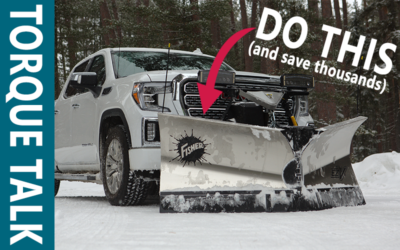Your Ultimate Guide to Tire Chains in Canada
(with Resources)
By: Megan B

Winter is a fundamental part of life up north, and it’s essential that drivers are well-equipped to face snow, ice, and whatever else winter might throw your way. Canadians are familiar with this fact, and know that come October, it’s time to book in to get your winter tires put on.
But sometimes, winter tires are not enough and when it gets dicey, you need extra insurance.
Enter: tire chains.
Tire chains give you more traction, penetrating deeper into ice and snow to give you better grip to stay safe. Plus, modern snow chains are straightforward to install and remove, making them a great tool to have in your winter preparedness arsenal.
However, though effective, tire chains are not always permitted on Canadian roads, with the laws surrounding their use varying from province to province. That’s why it’s important to brush up on the legislation that applies to your area before slipping on those chains and getting to work.
Which provinces/territories have no regulations surrounding studs or tire chains?
Yukon, Northwest Territories, Nunavut, Manitoba, Saskatchewan, New Brunswick, and Nova Scotia all have no winter tire regulations, meaning that both studded tires and chains are permitted, and drivers are simply advised to use discretion as to whether studs or chains are required to drive safely, given the conditions. However, be sure to check the laws for the jurisdiction that you’ll be travelling in for any by-laws regarding tire chain use.
Provinces with regulations:
British Columbia
In British Columbia, winter tires or chains are required on most routes from October 1 to April 30 (or March 31 for routes not located through mountain passes or in high snowfall areas.) You can find regulatory signs, like the ones to the right, posted on highways throughout the province.
If you’re caught without winter tires or chains on these routes, you may be turned away from travelling the route and fined by law enforcement.
Maps of routes that require winter tires or chains are available by following the link above, or by heading over to the Government of British Columbia website.
Alberta
There is no legislation prohibiting the use of tire chains in Alberta, but law enforcement can charge drivers who are causing deliberate damage to the roadway due to tire chains. This falls under Alberta’s Highways Development and Protection Act section 51, which prohibits damage to roadways.


Ontario
Tire chains are not permitted in Ontario, under the Highway Traffic Controls Act, even on highways.
Quebec
While it is required that all vehicles have winter tires from December 1 to March 15, tire chains are reserved for only certain vehicles. Only emergency vehicles, farm tractors, or any road vehicles used for snow removal or winter maintenance from October 15 to May 1 may use tire chains. Otherwise, it is prohibited for all other vehicles.
Prince Edward Island
Tire studs are permitted between October 1 and May 31, according to PEI’s Highway Traffic Act, as are tire chains at the driver’s discretion, in order to try and prevent damage to the road.
Newfoundland
Not only are tire chains allowed in Newfoundland, but it is a requirement that all vehicles travelling on snowy or icy highways have them installed on drive axle tires.
Be sure to get familiar with your province’s regulations and legislation – as well as any applicable by-laws – surrounding winter driving so you can drive safely and confidently, no matter the conditions.
If you want to brush up on best practices to keep in mind this winter, give our short article on The Cold Facts of Winter Operation a read.
Finally, if you need a set of tire chains, stop by one of our locations and our friendly staff will help you get tire chains – and any other winter accessories – you may need to have your rig winter-ready.
We’ve covered when to use chains but that’s not the whole story, You also need to decided what chains to use. Luckily, we cover that in this video! Check it out now.
Belts Don’t Last Forever
Proactive belt inspections prevent downtime. Choose the right fan belt for seamless, reliable vehicle performance.
Parts for Trucks Inc. announces acquisition of Trailine Trailer Parts in Surrey, BC.
Hey Vancouver (well Surrey technically), meet Parts for Trucks!
Mistakes EVERYONE Makes when Putting Away their Fisher Equipment for the Summer
If you’re tired of dealing with rusted components or damaged belts when you take out your plow after a long summer of storage, this video is for you. Don’t make the same mistakes as everyone else.





